In spring 2012, landscape designer Cleve West, who not only won Best Show Garden at the Chelsea Flower Show in 2011 but also repeated the feat at the 2012 show, addressed a meeting of the British Society of Garden Designers stating that he doubted that garden shows, led by Chelsea, had any influence on how we look at garden design in our own gardens. In other words, trends don't emanate from such events.
In part I agree. Some of the show gardens just pick up emerging trends and so magnify their impact and speed their uptake. But other trends, such as the planting of alliums en masse, have blossomed from the seeds sown by the show gardens at Chelsea.
It is very easy to get bogged down at the show in minute details and miss the wider themes or trends. The trends that I've picked up from Chelsea this year are the use of traditional topiary in various forms, the creation of "new English" style and the planting schemes of repetitive planting and plant communities.
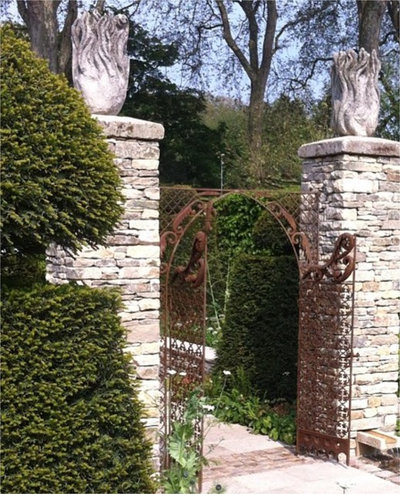
David Ward
The Resurgence of TopiaryIn several of this year's display gardens we saw the resurgence of topiary. The Brewin Dolphin Garden, designed by Cleve West, brings back full-scale 19th-century topiary forms.
The 8-foot-high yew sentinals were sourced ready grown from a Belgian nursery and give a real permanence to the design. The rustic limestone pillars hint at the undercurrent trend of the revival of the traditional English country garden and the birth of the new English style.
The Brewin Dolphin Garden; designer: Cleve West; gold medal winner and Best Show Garden
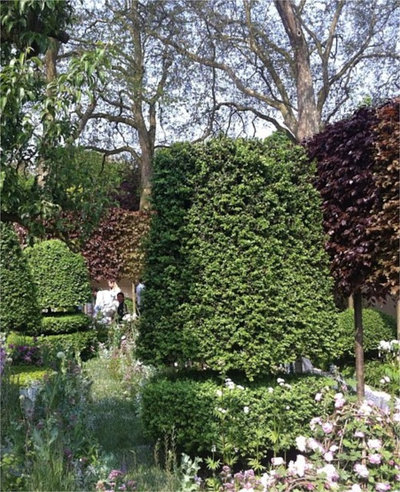
David Ward
Set in a sea of mixed perennials, large topiary shapes also appeared in Arne Maynard's Champagne Laurent-Perrier Garden. The stunning feature backing the garden, though, is a long copper-beech stilt hedge with the same mixed planting flowing underneath.
The Champagne Laurent-Perrier Garden; designer: Arne Maynard; gold medal winner
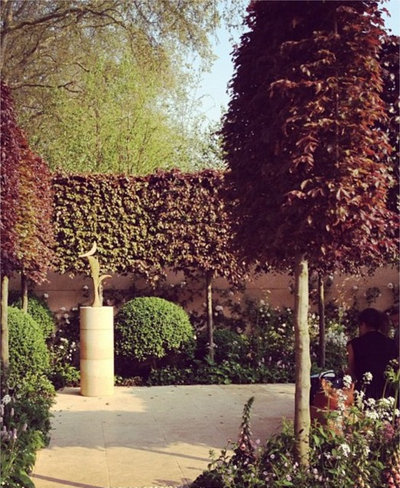
David Ward
Low, trimmed evergreens are also set among the loose perennials. They were almost a signature planting of this year's show.
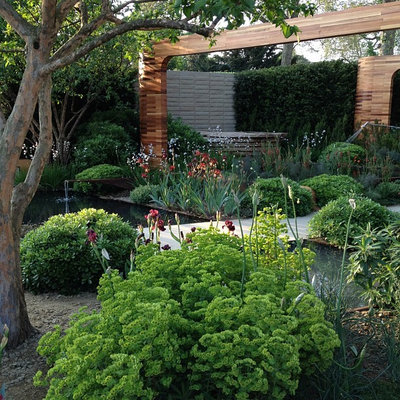
Sui Kee Searle
More manageable trimmed evergreens, which we can introduce into our own gardens, were shown in the Homebase Teenage Cancer Trust Garden, designed by Joe Swift. The loosely clipped evergreens have both shape and substance, and allow the bronze-colored bearded iris and verbascum to take center stage.
The Homebase Teenage Cancer Trust Garden; designer: Joe Swift; gold medal winner
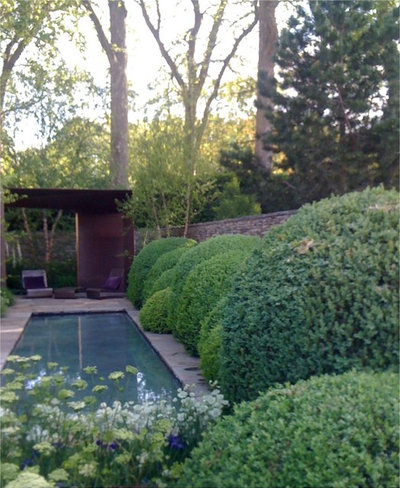
Not all trends start at Chelsea, but some — like this different style of topiary — were reinforced as stylish by their use in a show garden.
Tom Stuart-Smith's Laurent-Perrier garden used cloud-pruned box,
Buxus spp., in his elegant and romantic 2010 Chelsea garden.
Cloud pruning was originally a Japanese method of training trees and shrubs into shapes resembling clouds, but the mounded hedges of box in the Jacques Wirtz garden in Belgium were possibly the inspiration for this more relaxed form of cloud pruning in his Chelsea show garden.
Shaping a cloud-form hedge is easier than you think. Imagine billowing clouds as you shape, cutting only into top layers of the bush. It is easier to do this with a hedge that has already grown out for a couple of years; then you can make the undulations as extreme as you like.
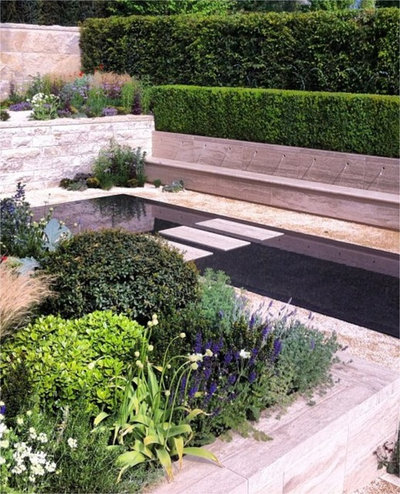
David Ward
In Thomas Hoblyn's Arthritis Research U.K. Garden, we again see the use of clipped topiary, both enhancing the border planting and as boundary hedging. But influences also include the great Renaissance gardens of Italy — this garden captures the classic formality of the historic gardens at Villa Lante and Villa d’Este.
The planting follows a more English style of herbaeceous mixtures rather than trends from Germany and the Netherlands.
The Arthritis Research U.K. Garden; designer: Thomas Hoblyn; silver-gilt medal winner
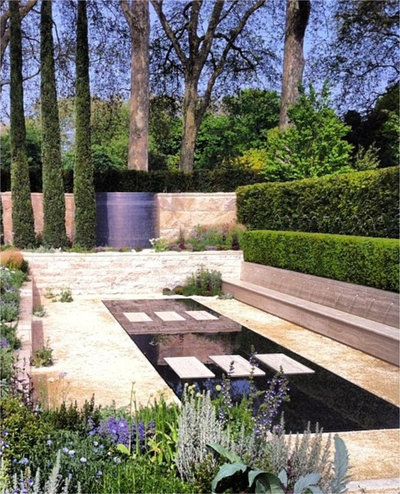
David Ward
This long, still rectangular pool reflects the stillness of the garden, while the floating stepping stones bring a modernistic touch.
At the rear of the garden we find one of the Italian influences of this design: the use of the Italian cypress,
Cupressus sempervirens. These narrow conifers are classic Italian, long used for formal hedges, reaching 70 feet tall but growing only about 6 feet wide. Slim conifers, such as these cypresses, are perfect for creating punctuation points in your garden.
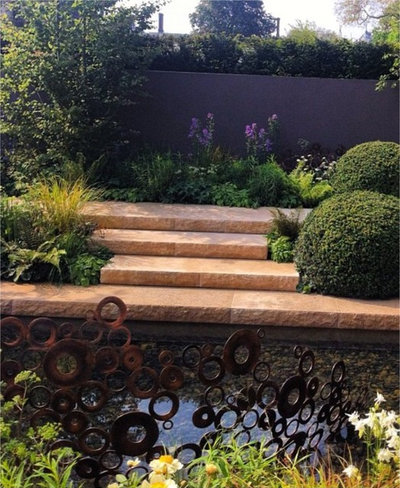
David Ward
The New English StyleAndy Sturgeon's M & G Investments Garden in some way echoes what we have seen in the previous gardens, strengthening the return to traditional Arts and Crafts style — what is being called the new English style.
It has the same rather simple rectangular pool, clipped evergreens (yet again) and an almost discreet mixed planting, this time with a lot of umbellifers such as ornamental 'cow parsley',
Anthriscus sylvestris.
We have seen the end, for the time being, of the color-theme border, which has been replaced over the past few years with repetition planting, in which only three or four key plants are used to create a more naturalistic look.
The M & G Investments Garden; designer: Andy Sturgeon; gold medal winner
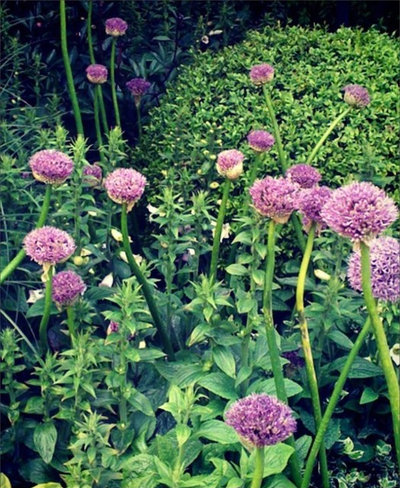
David Ward
This image shows the link between the use of clipped evergreens and another trend — the slow change from repetitive planting to the use of plant communities.
Here, the irregular planting of the globe-headed alliums contrasts against the dark foliage but also mirrors the round, clipped shapes.
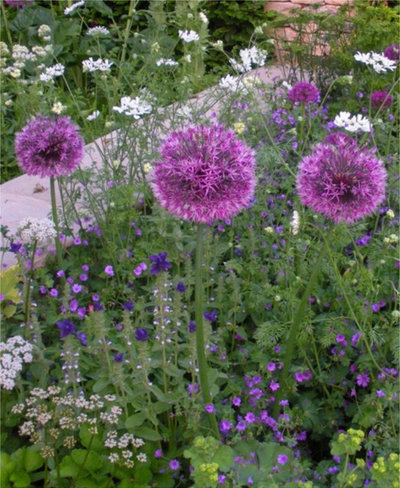
David Ward
Repetitive Planting and Plant CommunitiesRepetitive planting has become a captivating trend over the past few Chelsea Flower Shows. A garden from 2012 shows how cleverly the interweaving of only three to four key plants creates a naturalistic theme. Harmony is acheived by restricting the color range as well as the species.
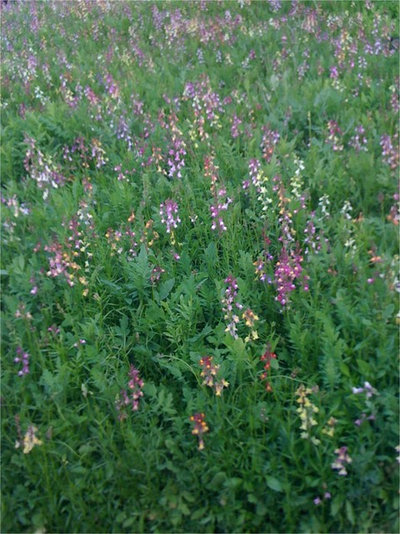
Plant community planting is all about selecting a range of plants suited to a certain situation, be it a marshy wildflower meadow or woodland glades. The selection is generally very restrictive, with less being more and with an irregular repetition of the planting. This trend was seen in quite a few gardens, including the young designer Sarah Price's Daily Telegraph Garden.
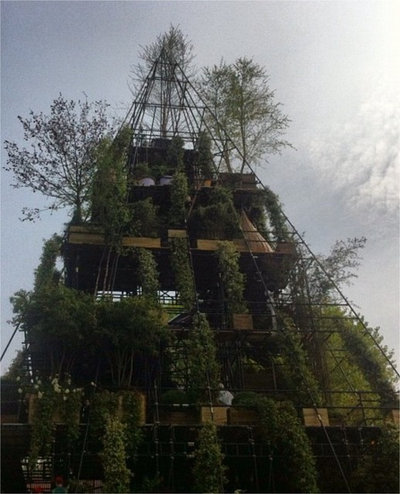
David Ward
The Royal Horticultural Society and the Chelsea Flower Show are not known for extremes or for pushing the boat out, but they have once again allowed the bad boy of British garden design, Irishman Diarmuid Gavin, to construct a garden. Last year he created the renowned hanging Sky Garden.
His design for Westland Horticulture is a great pyramid composed of seven terraces, with stairs, a lift to the top floor and a spiral steel slide to come down. Trees, including birch, grow upright in multilevel planting boxes that link the terraces together. Trailing climbers cover the scaffolding pole construction, turning it into a contemporary Hanging Gardens of Babylon.
I suppose there is not a lot for us to take from this garden except that it uses its footprint very well, and it does remind us that gardens can be great fun even if they're a little zany!
The Westland Magical Garden; designer: Diarmuid Gavin; silver-gilt medal winner





